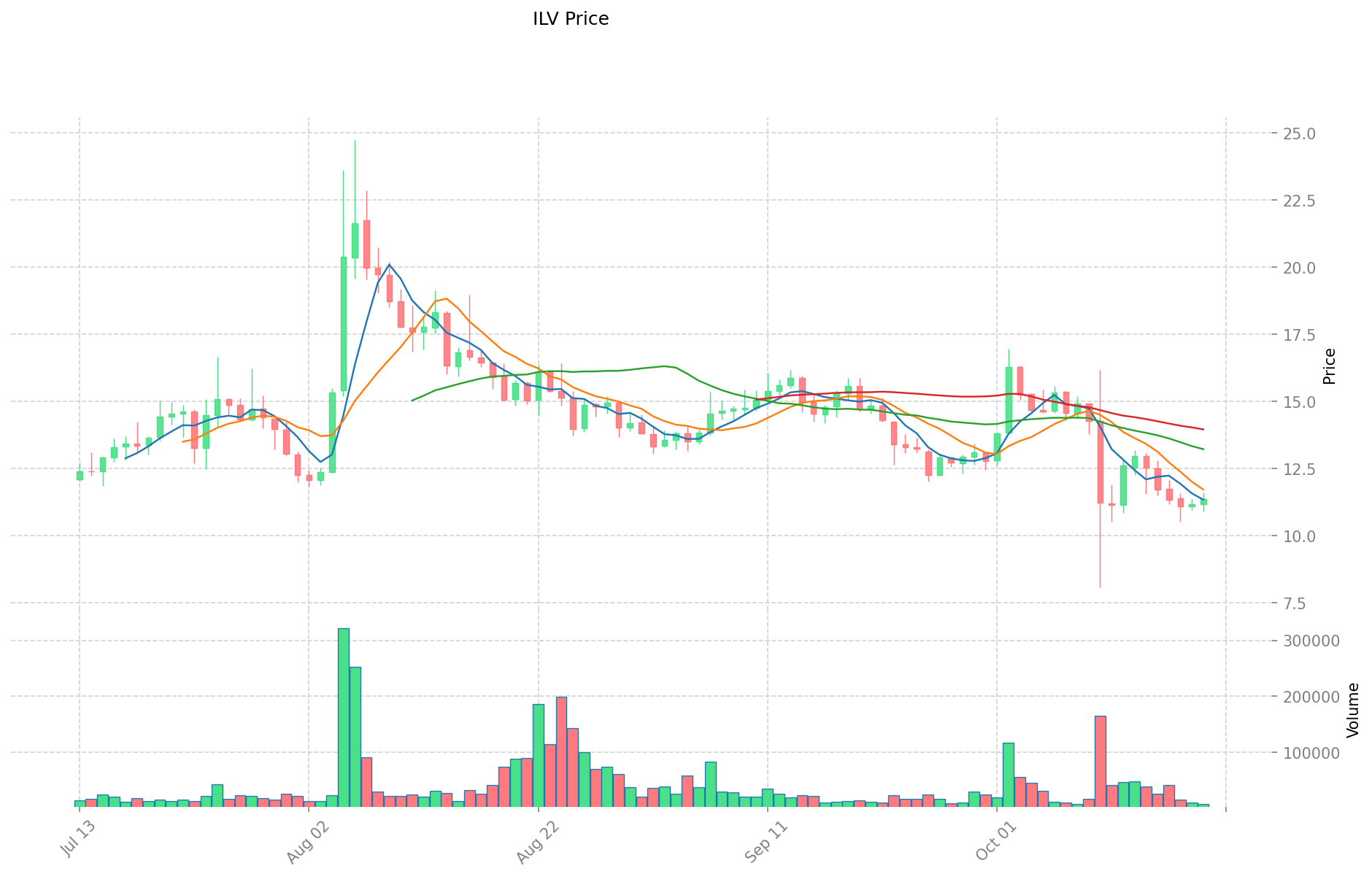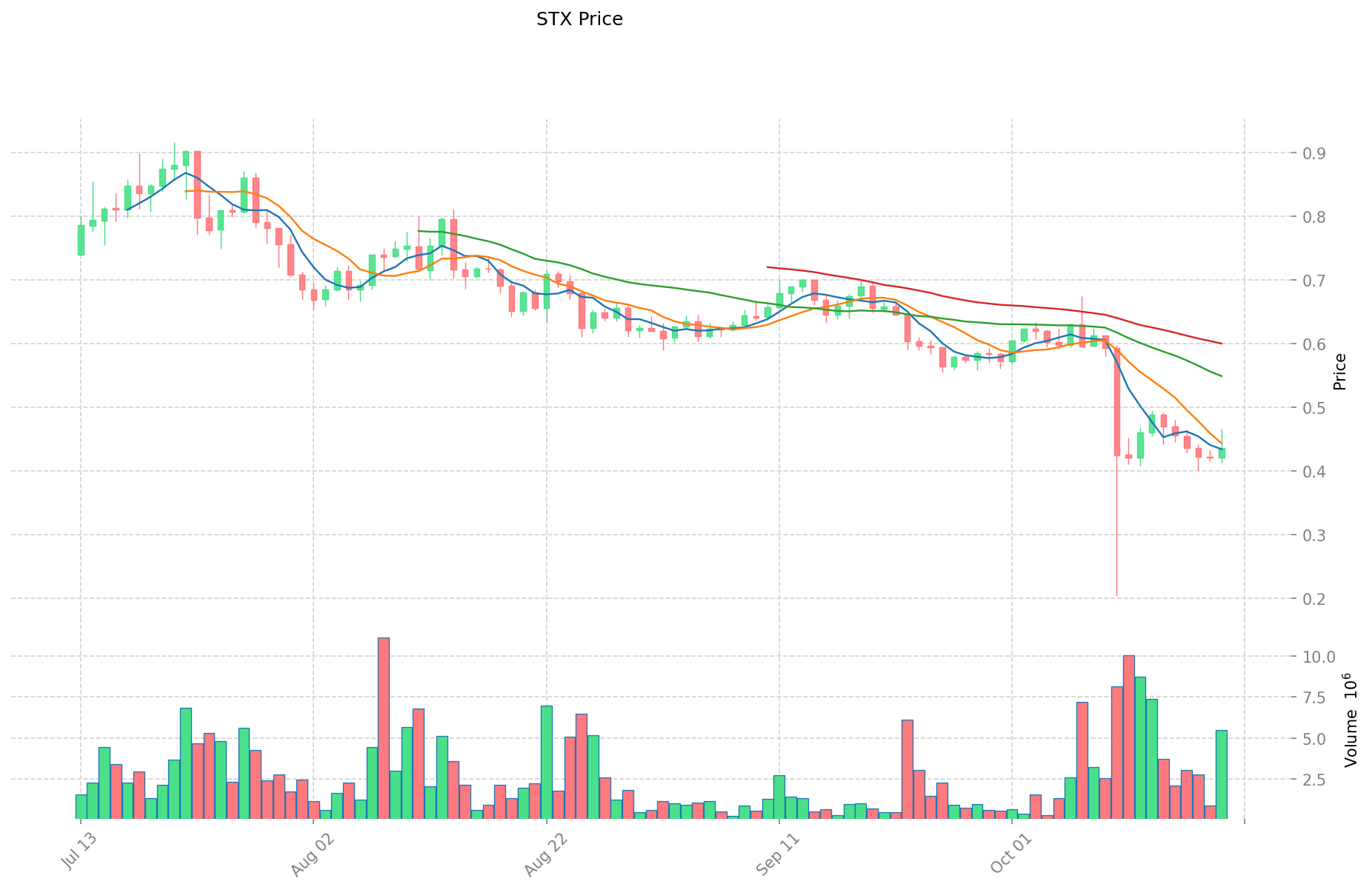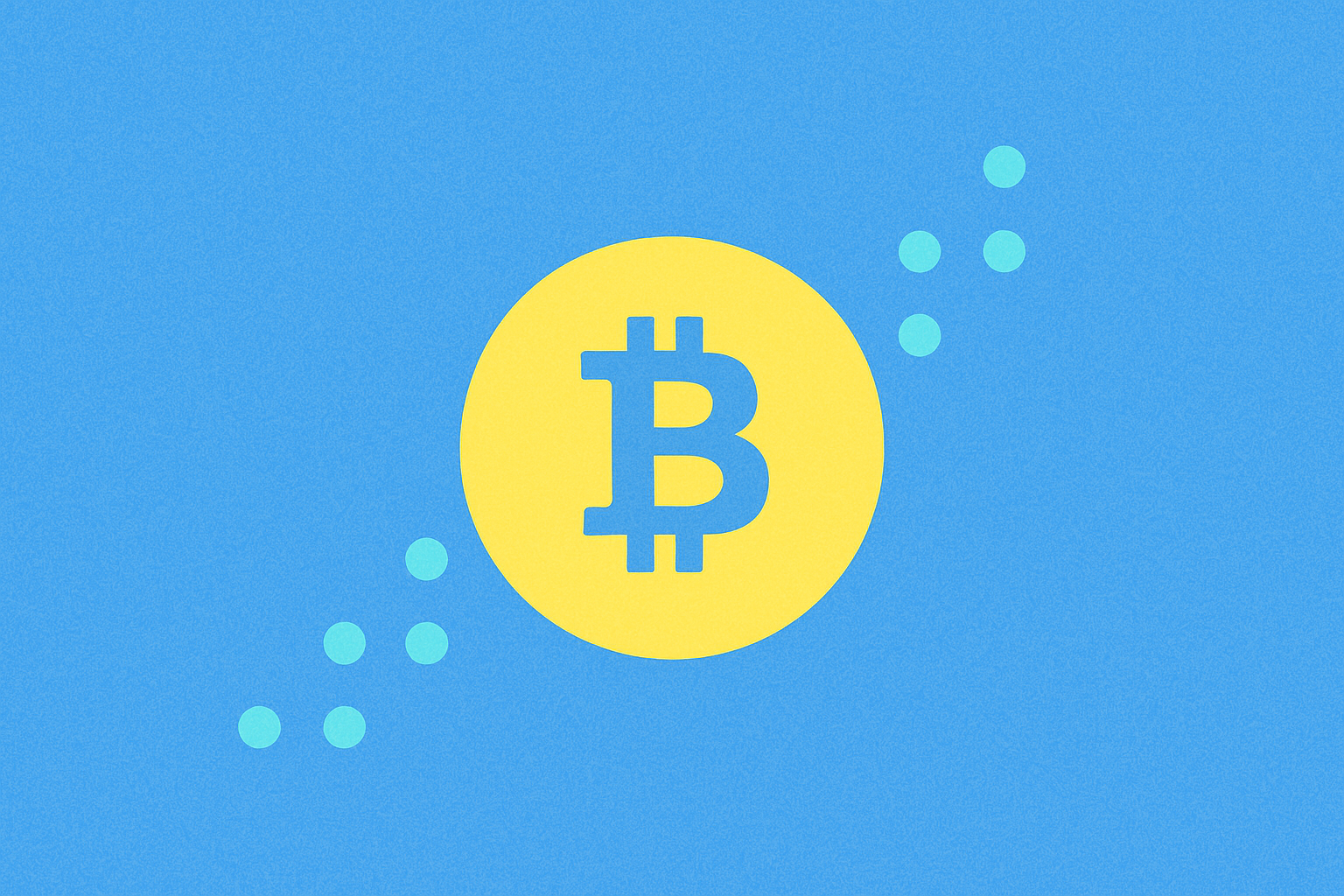ILV ve STX: İki Öne Çıkan Blockchain Oyun Tokeninin Karşılaştırmalı Analizi

Giriş: ILV ve STX Yatırımı Karşılaştırması
Kripto para piyasasında Illuvium (ILV) ile Stacks (STX) karşılaştırması, yatırımcıların vazgeçilmez gündem maddelerinden biri olmuştur. Her iki varlık; piyasa değeri sıralaması, kullanım alanları ve fiyat performansı bakımından kayda değer farklılıklar gösterirken, kripto varlıklarının konumlandırılması açısından da birbirinden ayrılırlar.
Illuvium (ILV): 2021’de piyasaya sürülmesinden bu yana, Ethereum ağı üzerinde inşa edilen açık dünya GameFi konseptiyle hızla piyasa tarafından benimsendi.
Stacks (STX): 2019’da tanıtılmış olup, merkeziyetsiz uygulamalar için yeni bir internet olarak tanımlanmakta ve blokzincirin "Google"ı olmayı hedeflemektedir.
Bu makalede; ILV ile STX’in yatırım değerleri, geçmiş fiyat eğilimleri, arz mekanizmaları, kurumsal katılım, teknik ekosistem ve gelecek öngörüleri açısından kapsamlı biçimde analiz edilerek yatırımcıların en çok merak ettiği soruya yanıt aranacaktır:
"Şu anda hangisi daha iyi bir yatırım fırsatı sunuyor?"
I. Fiyat Geçmişi Karşılaştırması ve Güncel Piyasa Durumu
ILV (Coin A) ve STX (Coin B) Tarihsel Fiyat Eğilimleri
- 2021: ILV, 30 Kasım 2021’de 1.911,26 $ ile tüm zamanların en yüksek seviyesine ulaştı.
- 2024: STX, 1 Nisan 2024’te 3,86 $ ile zirve yaptı.
- Karşılaştırma: Güncel piyasa döngüsünde ILV, zirvesinden 11,255 $ seviyesine gerilerken; STX ise 0,4344 $ seviyesine düştü.
Güncel Piyasa Durumu (20 Ekim 2025)
- ILV güncel fiyatı: 11,255 $
- STX güncel fiyatı: 0,4344 $
- 24 saatlik işlem hacmi: ILV 92.624,53 $; STX 2.471.961,28 $
- Piyasa Duyarlılık Endeksi (Korku & Açgözlülük Endeksi): 29 (Korku)
Anlık fiyatları görüntülemek için tıklayın:
- ILV güncel fiyatı için Piyasa Fiyatı
- STX güncel fiyatı için Piyasa Fiyatı
<>
二、项目概况与技术特点
{Coin A} Proje Özeti
{Coin B} Proje Özeti
Teknik Karşılaştırma Analizi
>


II. ILV ve STX’in Yatırım Değerini Etkileyen Temel Unsurlar
Arz Mekanizmaları Karşılaştırması (Tokenomik)
- ILV: 10 milyon ile sınırlı arzı ve deflasyonist modeliyle; tokenlar staking ve yakım ile dolaşımdan çıkarılır
- STX: Maksimum 1.818 milyar token arzı ve yaklaşık her 4 yılda bir gerçekleşen halving mekanizması, Bitcoin modeline benzer
- 📌 Tarihsel Model: Sabit arzlı varlıklar olan ILV ve STX, ağ benimsenmesinin arttığı dönemlerde değer kazanma eğilimi gösterir; STX’in halving etkinlikleri ise arz şoku yaratarak fiyat döngülerini tetikleyebilir.
Kurumsal Benimseme ve Piyasa Uygulamaları
- Kurumsal Varlıklar: STX, Bitcoin bağlantısı ve düzenleyici netliği sayesinde daha fazla kurumsal ilgi görürken; ILV ise ağırlıklı olarak oyun ve kripto meraklıları tarafından tutulmaktadır
- Kurumsal Benimseme: STX, finansal hizmetler ve Bitcoin uygulamaları için altyapı entegrasyonunda öne çıkarken; ILV’nin benimsenmesi oyun platformları ve NFT pazarları ile sınırlı kalıyor
- Ulusal Politikalar: STX, Bitcoin’e olan bağlantısı sayesinde birden fazla ülkede daha net regülasyonlardan faydalanırken; ILV bazı pazarlarda oyun ile ilgili düzenleyici zorluklarla karşılaşabiliyor
Teknik Gelişim ve Ekosistem Oluşumu
- ILV Teknik İyileştirmeleri: Immutable X entegrasyonu ile Layer 2 ölçeklenebilirlik, işlem maliyetlerinin azaltılması ve oyun performansının geliştirilmesi
- STX Teknik Gelişimi: Nakamoto sürümü ile ölçeklenebilirliğin ve Bitcoin entegrasyonunun artırılması; sBTC sayesinde Bitcoin’in daha etkin kullanımı
- Ekosistem Karşılaştırması: ILV; oyun, NFT ve play-to-earn uygulamalarına odaklanırken; STX, DeFi hizmetleri, Bitcoin tabanlı DApp’ler ve Bitcoin ekosisteminde akıllı sözleşme fonksiyonlarına odaklanıyor
Makroekonomik Faktörler ve Piyasa Döngüleri
- Enflasyon Ortamı Performansı: Her iki varlık da değer saklama özelliği gösteriyor; STX, Bitcoin’in enflasyona karşı koruma aracı olarak benimsenmesinden faydalanabilir
- Makroekonomik Para Politikası: Faiz oranı değişimleri her iki varlığı da diğer riskli varlıklara benzer şekilde etkiler; STX’in Bitcoin ile korelasyonu, piyasa düşüşlerinde tampon etkisi sunabilir
- Jeopolitik Faktörler: STX’in Bitcoin bağlantısı, istikrarsız bölgelerde sınır ötesi işlemler için fayda sağlar; ILV’nin faydası ise daha çok oyun ekosistemiyle sınırlı kalır
III. 2025-2030 Fiyat Tahmini: ILV ve STX
Kısa Vadeli Tahmin (2025)
- ILV: Muhafazakâr 10,28 $ - 11,17 $ | İyimser 11,17 $ - 13,63 $
- STX: Muhafazakâr 0,31 $ - 0,43 $ | İyimser 0,43 $ - 0,59 $
Orta Vadeli Tahmin (2027)
- ILV büyüme fazına geçebilir; beklenen fiyat aralığı 11,22 $ - 20,54 $
- STX büyüme fazına geçebilir; beklenen fiyat aralığı 0,54 $ - 0,85 $
- Ana etkenler: Kurumsal sermaye girişi, ETF gelişimi, ekosistem büyümesi
Uzun Vadeli Tahmin (2030)
- ILV: Temel senaryo 19,19 $ - 23,69 $ | İyimser senaryo 23,69 $ - 32,21 $
- STX: Temel senaryo 0,80 $ - 1,03 $ | İyimser senaryo 1,03 $ - 1,36 $
Yasal Uyarı
ILV:
| Yıl | Tahmini En Yüksek Fiyat | Tahmini Ortalama Fiyat | Tahmini En Düşük Fiyat | Fiyat Değişimi (%) |
|---|---|---|---|---|
| 2025 | 13,62862 | 11,171 | 10,27732 | 0 |
| 2026 | 16,7397435 | 12,39981 | 11,2838271 | 10 |
| 2027 | 20,5433852175 | 14,56977675 | 11,2187280975 | 29 |
| 2028 | 24,930344996925 | 17,55658098375 | 12,991869927975 | 55 |
| 2029 | 26,129459478115125 | 21,2434629903375 | 14,657989463332875 | 88 |
| 2030 | 32,213587278547785 | 23,686461234226312 | 19,186033599723313 | 110 |
STX:
| Yıl | Tahmini En Yüksek Fiyat | Tahmini Ortalama Fiyat | Tahmini En Düşük Fiyat | Fiyat Değişimi (%) |
|---|---|---|---|---|
| 2025 | 0,592986 | 0,4297 | 0,313681 | -1 |
| 2026 | 0,70565334 | 0,511343 | 0,41418783 | 17 |
| 2027 | 0,851897438 | 0,60849817 | 0,5354783896 | 40 |
| 2028 | 1,0222769256 | 0,730197804 | 0,6936879138 | 68 |
| 2029 | 1,18292044248 | 0,8762373648 | 0,709752265488 | 101 |
| 2030 | 1,3590441528048 | 1,02957890364 | 0,8030715448392 | 137 |
IV. Yatırım Stratejisi Karşılaştırması: ILV ve STX
Uzun Vadeli ve Kısa Vadeli Yatırım Stratejisi
- ILV: Oyun ekosistemi ve NFT potansiyeline odaklanan yatırımcılar için uygun
- STX: Bitcoin ekosistemine ve akıllı sözleşme fonksiyonlarına erişim arayan yatırımcılar için uygun
Risk Yönetimi ve Varlık Dağılımı
- Temkinli yatırımcılar: ILV %30, STX %70
- Agresif yatırımcılar: ILV %60, STX %40
- Koruma araçları: Stablecoin tahsisi, opsiyonlar, çapraz para portföyleri
V. Potansiyel Risk Karşılaştırması
Piyasa Riski
- ILV: Oyun sektörü trendleri ve NFT piyasası duyarlılığına yüksek derecede bağlı
- STX: Bitcoin fiyat hareketleri ve genel kripto piyasa koşullarıyla bağlantılı
Teknik Risk
- ILV: Ölçeklenebilirlik sorunları, yoğun oyun dönemi ağ stabilitesi
- STX: Bitcoin ağında tıkanıklık etkisi, potansiyel akıllı sözleşme açıkları
Düzenleyici Risk
- Küresel düzenleyici politikalar varlıkları farklı şekilde etkileyebilir; STX, Bitcoin’e ilişkin daha net regülasyonlardan faydalanabilir
VI. Sonuç: Hangisi Daha İyi Alım?
📌 Yatırım Değeri Özeti:
- ILV avantajları: Benzersiz oyun ekosistemi, NFT entegrasyonu, deflasyonist tokenomik
- STX avantajları: Bitcoin ekosistemi bağlantısı, kurumsal benimseme, halving mekanizması
✅ Yatırım Tavsiyesi:
- Yeni yatırımcılar: Daha yerleşik Bitcoin ekosistemi bağlantısı nedeniyle STX’e hafif öncelik vererek dengeli yaklaşım benimseyebilir
- Deneyimli yatırımcılar: Her iki varlıkta da fırsatları değerlendirebilir; ILV yüksek büyüme potansiyeli, STX ise daha istikrarlı ve Bitcoin bağlantılı büyüme sunar
- Kurumsal yatırımcılar: STX’in regülasyon netliği ve Bitcoin entegrasyonuna odaklanmalı, ILV’nin oyun sektörü gelişimini takip etmeli
⚠️ Risk Uyarısı: Kripto para piyasası yüksek volatiliteye sahiptir, bu makale yatırım tavsiyesi içermez. None
VII. Sıkça Sorulan Sorular
S1: ILV ve STX’in temel farkları nedir? C: ILV, Ethereum üzerinde oyun ve NFT odaklıdır, 10 milyon token ile sınırlı arza sahiptir. STX ise Bitcoin ekosistemi uygulamaları için tasarlanmıştır, maksimum 1.818 milyar token arzı ve Bitcoin’e benzer bir halving mekanizmasına sahiptir.
S2: Geçmişte hangi token daha iyi fiyat performansı gösterdi? C: ILV, Kasım 2021’de 1.911,26 $ ile en yüksek seviyeye ulaşırken; STX Nisan 2024’te 3,86 $ ile zirve yaptı. Ancak her ikisi de zirvelerinden önemli ölçüde geriledi.
S3: ILV ve STX’in arz mekanizmaları nasıl farklılaşıyor? C: ILV, staking ve yakım yoluyla dolaşımdan çıkarılan deflasyonist modele sahip. STX ise yaklaşık 4 yılda bir halving mekanizması uygular, bu da Bitcoin’e benzer.
S4: Kurumsal benimseme açısından hangi token önde? C: STX, Bitcoin bağlantısı ve regülasyon netliği sayesinde daha fazla kurumsal ilgi görürken; ILV daha çok oyun ve kripto meraklıları tarafından tutuluyor.
S5: Her token için ana teknik gelişmeler neler? C: ILV, Immutable X entegrasyonu ile Layer 2 ölçeklenebilirliğe geçti. STX ise sBTC ile Bitcoin entegrasyonunu ve ölçeklenebilirliği artıran Nakamoto sürümünü uyguladı.
S6: Makroekonomik faktörler ILV ve STX’i nasıl etkiliyor? C: Her iki varlık da makroekonomik faktörlerden etkilenir; STX’in Bitcoin ile korelasyonu, piyasa düşüşlerinde tampon etkisi sunabilir. STX ayrıca istikrarsız bölgelerde sınır ötesi işlemler için fayda sağlıyor.
S7: 2030’a kadar ILV ve STX için uzun vadeli fiyat tahmini nedir? C: ILV için temel senaryo 19,19 $ - 23,69 $, iyimser senaryo ise 23,69 $ - 32,21 $. STX için temel senaryo 0,80 $ - 1,03 $, iyimser senaryo ise 1,03 $ - 1,36 $.
S8: Farklı yatırımcı tipleri için hangi token daha iyi alım olarak öne çıkıyor? C: Yeni yatırımcılar, Bitcoin ekosistemi bağlantısı nedeniyle STX’i tercih edebilir. Deneyimli yatırımcılar her iki varlıkta fırsat arayabilir; ILV’de yüksek büyüme, STX’te ise daha istikrarlı büyüme potansiyeli mevcut. Kurumsal yatırımcılar STX’in regülasyon netliğine ve Bitcoin entegrasyonuna odaklanabilir.

2025 AXS Fiyat Tahmini: Boğa Koşusu Analizi ve Oyun Token Pazarında Stratejik Yatırım Fırsatları

2025 WEMIX Fiyat Tahmini: Gelişen Kripto Ekosisteminde Piyasa Trendleri ve Gelecek Potansiyelinin Analizi

SLP nedir: Konuşma-Dil Patolojisi mesleğini ve iletişim bozukluklarına etkisini anlamak

XAI nedir: Açıklanabilir Yapay Zekayı ve modern karar verme sistemlerine etkisini anlamak

2025 ORBR Fiyat Tahmini: Uzun Vadeli Yatırımcılar İçin Büyüme Potansiyeli ile Piyasa Faktörlerinin Analizi

2025 MON Fiyat Tahmini: Piyasa Trendleri ve Yatırımcılar İçin Büyüme Potansiyeli Analizi

Dropee Günlük Kombinasyonu 12 Aralık 2025

Tomarket Günlük Kombinasyonu 12 Aralık 2025

SEI Airdrop Ödülleri’ne Katılım ve Talep Etme Kılavuzu

Kripto para birimlerinde algoritmik alım satım için etkili stratejiler

Stock-to-Flow Model ile Bitcoin'in Değerlemesini Anlamak





